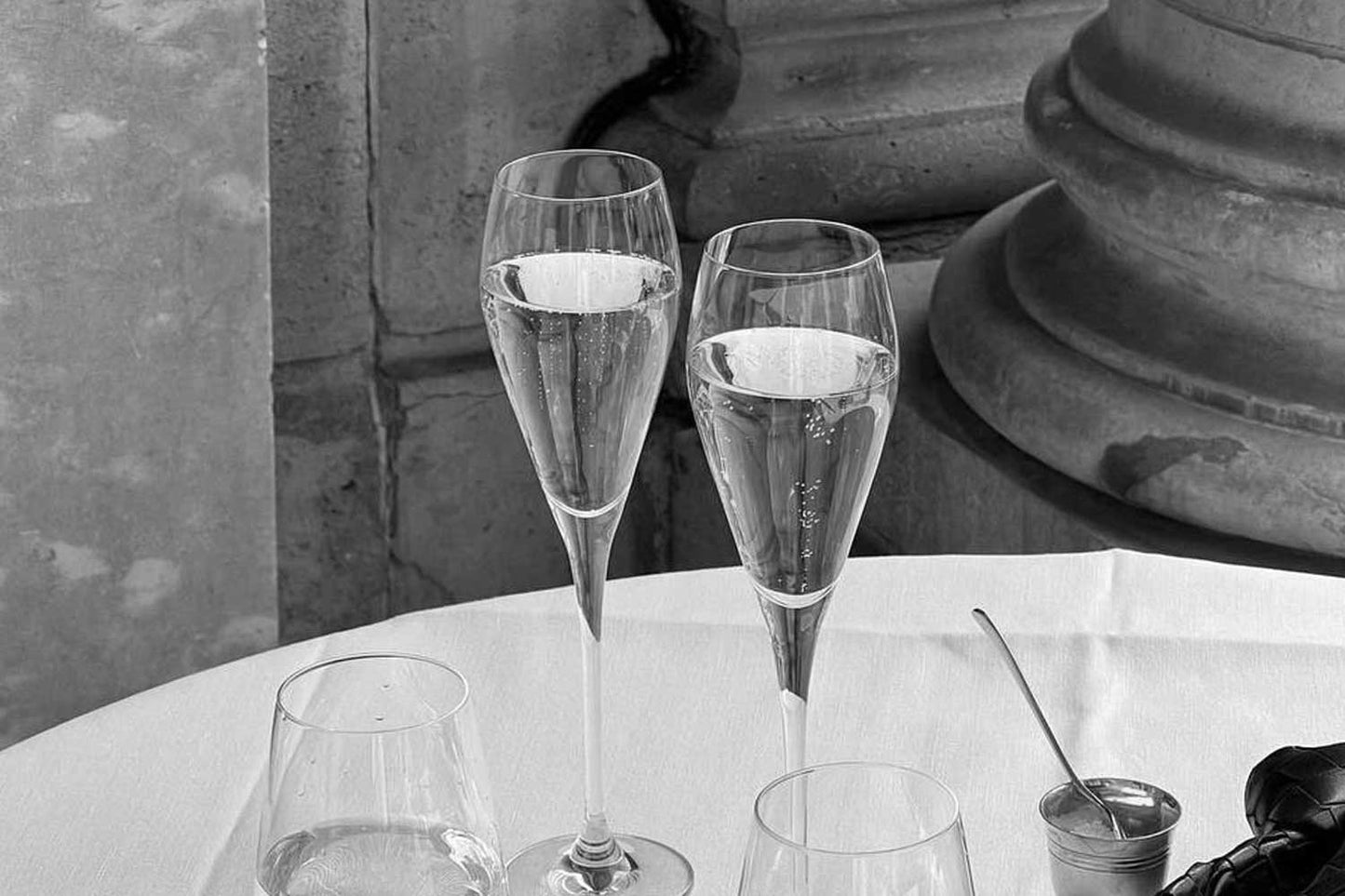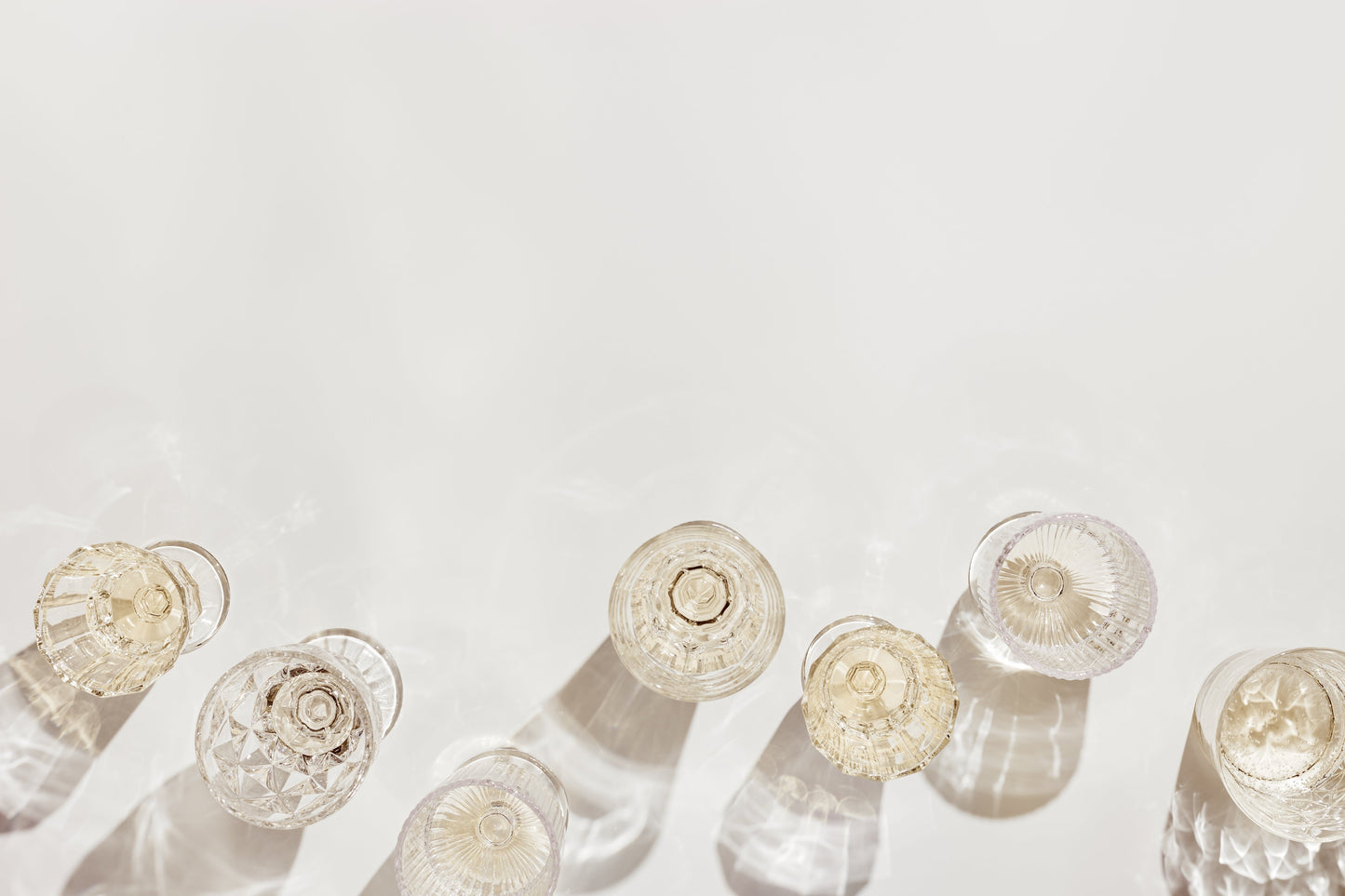
You would not serve oysters on a paper napkin. And you should not pour Champagne into the wrong glass.
For a long time, the coupe had its moment. All 1920s glamour and Gatsby nostalgia, it looked the part. But like many things from that era, it was more style than substance. The coupe lets bubbles escape too fast, losing the precision and energy that makes Champagne what it is.
Then came the flute. Tall, narrow, and unmistakably elegant. It holds the bubbles better, which helps, but it leaves no space for aroma. And Champagne, as anyone who’s paid attention knows, is not just about sparkle.
It’s about scent. The delicate citrus. The toasted brioche. The minerality you only get from years in the cellar. The flute keeps things lively but it keeps them quiet, too.
Which brings us to the tulip.
Wider at the base and gently tapered at the top, a tulip-shaped wine glass gives Champagne exactly what it needs: room to breathe, and space to gather itself. The shape allows the aromas to rise, the mousse to develop, and the flavours to land properly. Sommeliers tend to agree - it’s the glass that lets Champagne behave like the wine it is.
That does not mean you need to retire your flutes altogether. They still have their place, occasionally. But if the bottle in front of you is something special (and if it came in a magnum, it probably is), give it a little more room to move.
A good Champagne glass should feel like a good host: keeps things bright, keeps things moving, and knows when to let the real character come through.
So what should you reach for? A tulip, every time. Failing that, a good white wine glass will do the job far better than a narrow flute.
Because yes - Champagne will always be celebratory. But in the right glass, it becomes something more: nuanced, expressive, and every bit as generous as the occasion calls for.



